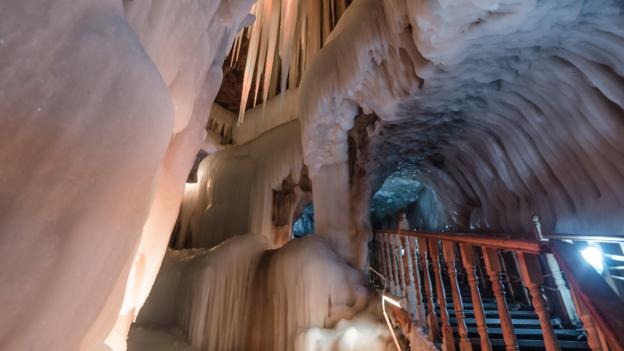The walls and floor of Ningwu cave are coated with slicks of frozen water. Ice stalactites stretch down from the ceiling, towards ice stalagmites reaching up from the floor.
The sight is dazzling, but it’s not unique. Such naturally occurring ice caves are scattered across continental Europe, through Russia, Central Asia, and North America. Many are major tourist attractions. But only in recent decades have people come up with simulations to model and understand what keeps these natural freezers so cold.
An early ice cave enthusiast, George Forrest Browne, helped to popularise them in the UK after his travels in Europe. He recorded his first encounter in Switzerland in 1861: “At the bottom, after penetrating a few yards into a chasm in the rock, we discovered a small low cave, perfectly dark, with a flooring of ice and a pillar of the same material.”
Aurel Persoiu, a researcher at the Emil Racovita Institute of Speleology in Romania, also won’t forget his first experience of an ice cave. “When you spend a lot of time caving, it really strikes you how unusual it is to see ice formations inside them. You start to ask why in this cave and not others? What makes it different?”
And what does make it different?


No comments:
Post a Comment